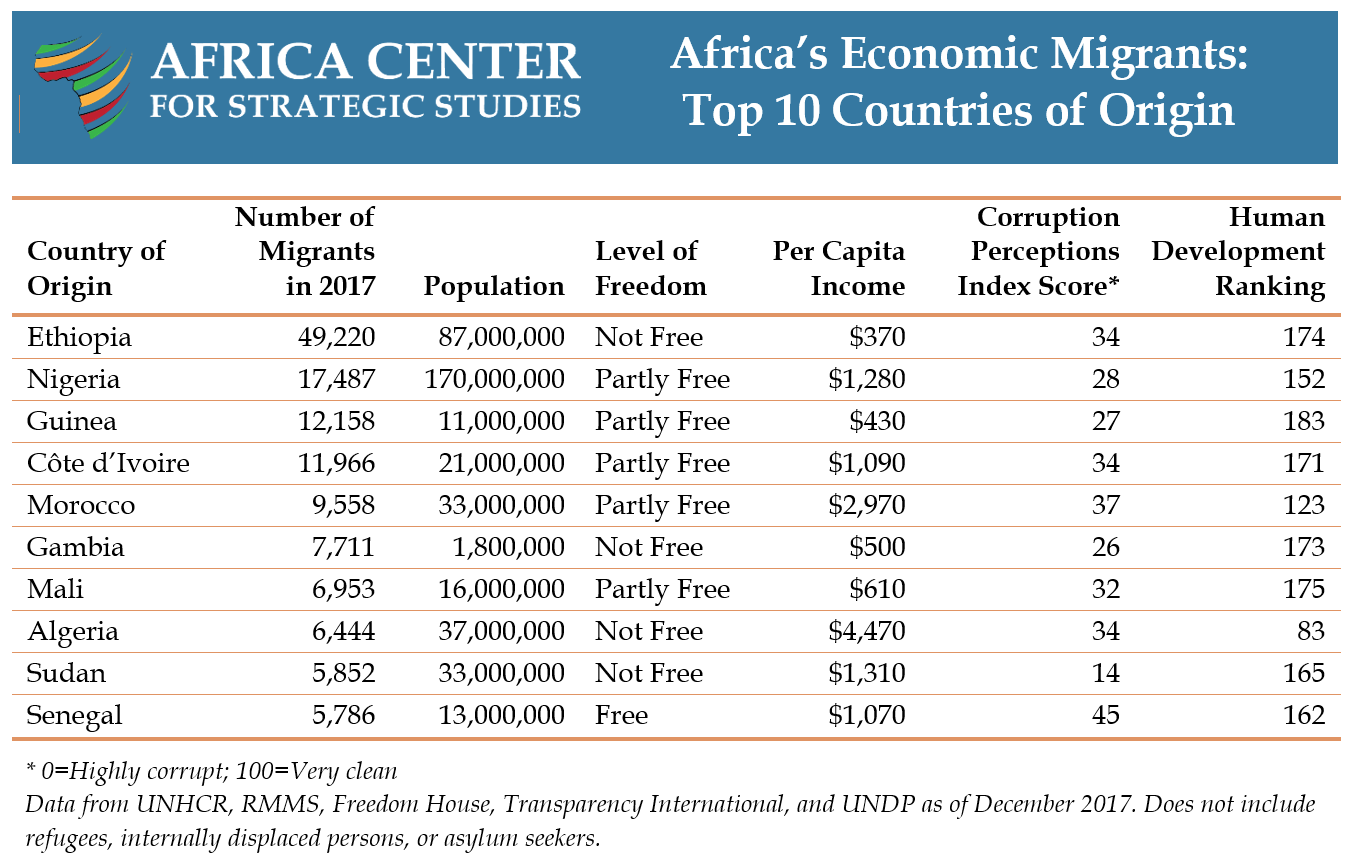Migration continues to be a major issue affecting African societies. Here are three observations on how Africa’s economic migrants* affect security on the continent:
- Three main migration routes are active on the continent.
- Africa’s migrants primarily use the central Mediterranean route—through Libya, Egypt, and to a lesser extent, Algeria and Tunisia. Roughly 105,000 African economic migrants took this route so far in 2017.
- The second most common route is via the Gulf of Aden to the Arabian Peninsula. About 38,500 Ethiopian migrants crossed into war-torn Yemen so far in 2017. Around 82,000 Ethiopian migrants crossed the year before.
- An estimated 15,000-17,000 economic migrants each year travel along a third route, from the Horn to Southern Africa.
- Over three-quarters of African migrants used the services of smugglers, which poses risks to the migrants and empowers criminal networks that threaten regional security.
- More than 79 percent of African migrants who reached Italy from Libya in the first half of 2017 reported experiencing at least one form of abuse—from extortion and not getting expected payment for work to physical violence, torture, and outright bondage. Law enforcement officials were regularly reported to be among the perpetrators.
- The migrant smuggling economy in Africa is loosely estimated at between $500 million to $1 billion. Much of this money is going into the hands of criminal networks, militias, corrupt officials, and violent militants.
- The “migration crisis” is not uniform across the continent. Rather, it is driven by a confluence of poverty, corruption, and poor governance.
- Nine of the top 10 countries of origin are considered “not free” or “partly free” in their access to political rights and civil liberties (see table).
- Eight of the top 10 fall within the bottom quintile of UNDP’s Human Development rankings.
- All of the countries face a serious corruption problem.
*Economic migrants, as used herein, are people leaving their home countries primarily in search of employment. This does not include the much larger populations of displaced persons, refugees, and asylum seekers.
Click on image for printable PDF

Additional Resources
- Giulia Spagna, “Weighing the Risks: Protection Risks and Human Rights Violations Faced by Migrants in and from East Africa,” RMMS Briefing Paper 5, October 2017.
- Bram Frouws and Christopher Horwood, “Smuggled South,” RMMS Briefing Paper 3, March 2017.
- Mark Micallef, “The Human Conveyor Belt: Trends in Human Trafficking and Smuggling in Post-revolution Libya,” Geneva: Global Initiative against Transnational Organized Crime, March 2017.
- Wendy Williams, “African Migration Funds Criminal and Terrorist Networks,” Africa Center for Strategic Studies, Spotlight, August 2015.
More on: Migration


